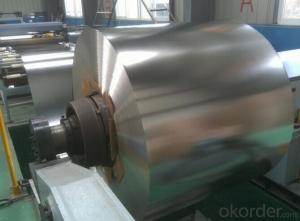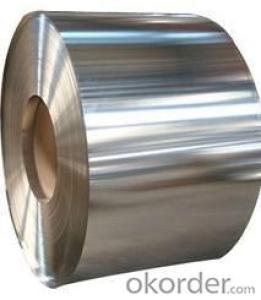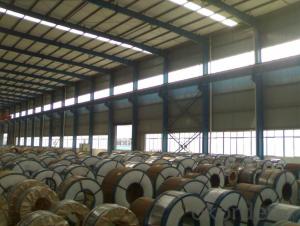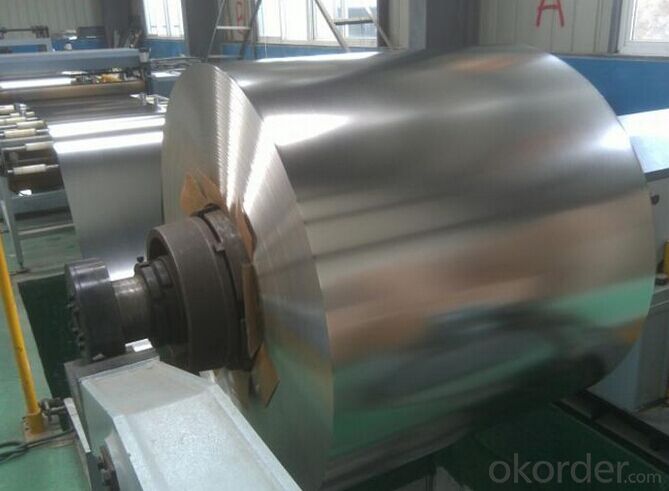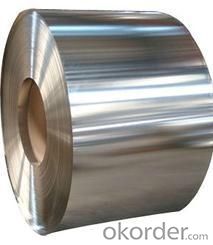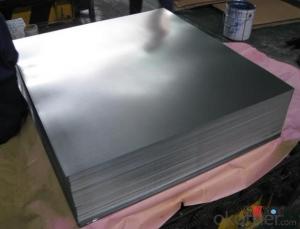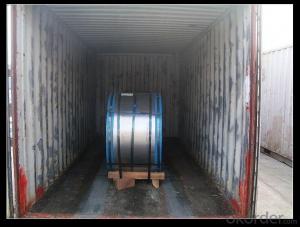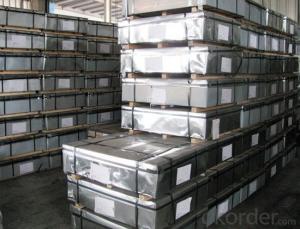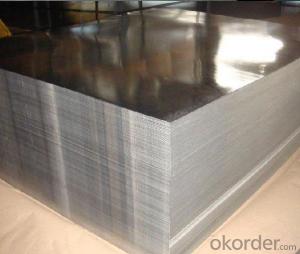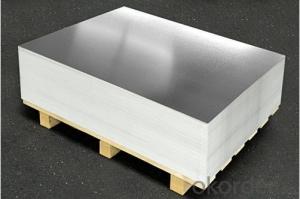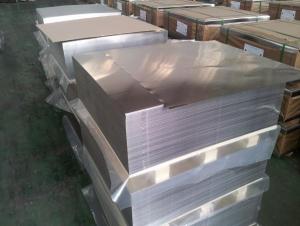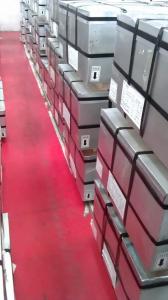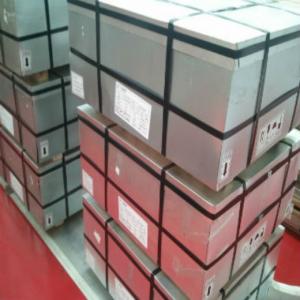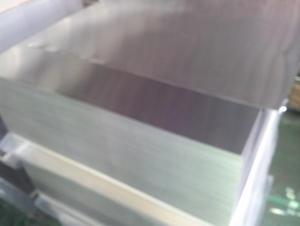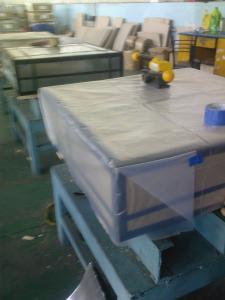Tinplate Coil / Sheet for Foods Packaging
- Loading Port:
- Tianjin
- Payment Terms:
- TT or LC
- Min Order Qty:
- 25 m.t
- Supply Capability:
- 7000 m.t/month
OKorder Service Pledge
OKorder Financial Service
You Might Also Like
1.Structure of Electrolytic Tin Plate Coils and Sheets for Foods Metal Packaging Description
Electrolytic Tinplate (ETP) is a thin, cold-rolled carbon steel sheet coated with tin. The steel substrate provides the necessary strength and formability for specialty fabrication. The alloy layer provides the bond between the steel and free tin layer. The free tin layer is not only responsible for the attractive bright finish and ease of solderability but is also non-toxic, a factor of vital importance in food packaging.
Tinplate’s corrosion resistance, light weight and malleability make it ideal for many precision end uses, including food packaging and consumer products. The special properties of tinplate and improved manufacturing technology is allowing for the utilization of tinplate in many new end products.
2.Main Features of the Electrolytic Tin Plate Coils and Sheets for Foods Metal Packaging
Tinplate is also widely used for making all types of containers such as food cans, beverage cans, and artistic cans, tea cans, painting cans, chemical package cans and dry food package cans, metal printing etc. Its applications are not limited to containers; recently, electrolytic tinplate has also been used for making electrical machinery parts and many other products.
3.Electrolytic Tin Plate Coils and Sheets for Foods Metal Packaging Images
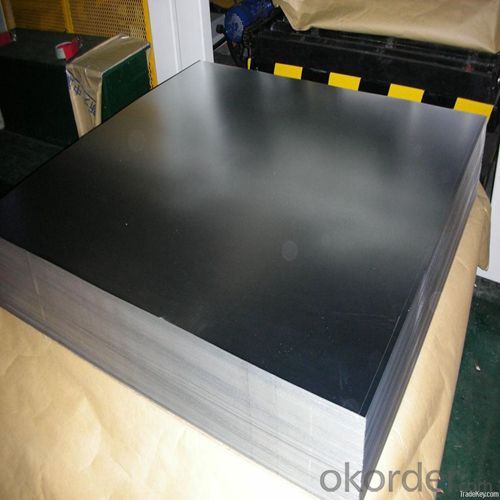
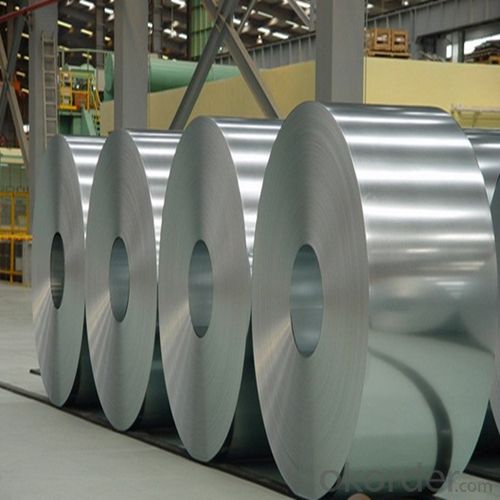
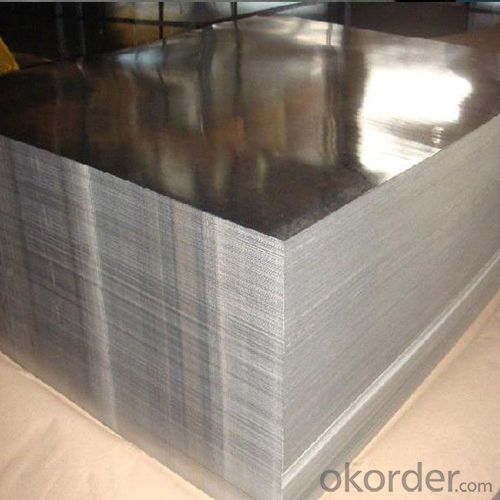
4.Electrolytic Tin Plate Coils and Sheets for Foods Metal Packaging Specification
Standard | ISO 11949 -1995, GB/T2520-2000,JIS G3303,ASTM A623, BS EN 10202
|
Material | MR,SPCC |
Thickness | 0.15mm - 0.50mm |
Width | 600mm -1150mm |
Temper | T1-T5 |
Annealing | BA & CA |
Coil Inner Diameter | 508mm |
Weight | 6-10 tons/coil 1~1.7 tons/sheets bundle |
Passivation | 311 |
Oil | DOS |
Surface | Finish,bright,stone,matte,silver |
5.FAQ of Electrolytic Tin Plate Coils and Sheets for Foods Metal Packaging
- How are the Electrolytic Tin Plates specified?
The Electrolytic Tin Plates are specified as per the steel base, extent of tempering, the coating weight, annealing method and the surface finish.
- How many types there are for base steels?
The base steels are of three types: Type MR, L, D
-What your tinplate material is used for ?
Tinplate is widely used for the packaging of products. Such as food cans,
beverage cans, pet cans, closures, general line cans and so on.
Printed Tinplate is offered!!
-How to place .an order or contact you ?
Please send us Email. we will give you a quick response in seconds .
- How is your quality ?
All our quality is prime even the secondary quality . We have many years experience
In this field with serious quality control standard . Advanced equipment, We welcome your visit to our factory .
- Q: What are the key properties of tinplate?
- Tinplate is characterized by its corrosion resistance, strong formability, and excellent storage stability, making it an ideal material for packaging applications.
- Q: How does tinplate perform in terms of chemical resistance?
- Tinplate generally offers good chemical resistance due to the protective layer of tin that is applied to its surface. This tin coating acts as a barrier against many corrosive substances, preventing them from coming into direct contact with the underlying steel. However, prolonged exposure to highly acidic or alkaline environments can potentially deteriorate the tin coating and compromise the chemical resistance of tinplate.
- Q: Can tinplate be used for packaging of sensitive electronic components?
- Yes, tinplate can be used for packaging of sensitive electronic components. Tinplate provides excellent protection against moisture, corrosion, and electromagnetic interference, making it a suitable material for safeguarding sensitive electronics during transportation and storage. Additionally, tinplate's durability ensures that the components remain intact and undamaged.
- Q: Can tinplate be used for medical packaging?
- Yes, tinplate can be used for medical packaging. Tinplate is a durable and corrosion-resistant material that provides excellent protection for medical products. It is commonly used for packaging pharmaceuticals, medical devices, and other healthcare products.
- Q: How does tinplate compare to other packaging materials in terms of cost?
- Tinplate is generally considered a cost-effective packaging material compared to other alternatives. While it may have a higher upfront cost compared to materials like plastic or cardboard, it offers excellent durability and longevity, which can make it more cost-efficient in the long run. Additionally, tinplate can be easily recycled, reducing disposal costs and environmental impact. Overall, tinplate's durability, recyclability, and potential for long-term cost savings make it a favorable choice for many industries.
- Q: Advantages and disadvantages of tinplate packaging
- Characteristics and advantages of the 1. materials can tinplate opaque sealed 3. tin 2. good reduction of 4. provides a source of effective iron 5. Recyclable, reuse. In compliance with international environmental requirements, in line with the future trend of the 6. products is strong, good protection, no deformation, shock resistance, fire resistance, resistance to high temperature and high pressure
- Q: How does tinplate contribute to the performance of ammunition?
- Tinplate contributes to the performance of ammunition by providing a durable and corrosion-resistant outer coating. This protective layer ensures that the ammunition remains intact and functional even under harsh environmental conditions, preventing rust and degradation. Additionally, tinplate's smooth surface facilitates easy loading and extraction of ammunition, enhancing reliability and efficiency during use. Overall, tinplate plays a crucial role in preserving the quality and performance of ammunition, ensuring its effectiveness and safety for users.
- Q: How does tinplate contribute to the overall ease of opening and closing packaging?
- Tinplate contributes to the overall ease of opening and closing packaging by providing a strong and durable material that can be easily shaped into various packaging forms. It offers excellent corrosion resistance, ensuring that the packaging remains intact and functional. Additionally, tinplate can be easily formed into easy-to-use closures, such as twist-off caps or pull tabs, enabling convenient opening and closing of the packaging without requiring any additional tools.
- Q: Can tinplate be used for signage and displays?
- Yes, tinplate can certainly be used for signage and displays. Tinplate is a versatile material that offers durability, strength, and a smooth surface for printing or painting. It can be easily shaped, cut, and formed to create various signage and display options, making it a popular choice for indoor and outdoor applications. Additionally, tinplate is resistant to corrosion, making it suitable for long-lasting and weather-resistant signage and displays.
- Q: How does tinplate contribute to the protection of agricultural products?
- Tinplate contributes to the protection of agricultural products by providing a durable and corrosion-resistant packaging material. It helps to prevent contamination, moisture, and oxygen from reaching the products, ensuring their freshness and quality. Additionally, tinplate's ability to withstand extreme temperatures and physical damage further safeguards agricultural goods during storage and transportation.
Send your message to us
Tinplate Coil / Sheet for Foods Packaging
- Loading Port:
- Tianjin
- Payment Terms:
- TT or LC
- Min Order Qty:
- 25 m.t
- Supply Capability:
- 7000 m.t/month
OKorder Service Pledge
OKorder Financial Service
Similar products
Hot products
Hot Searches
Related keywords
